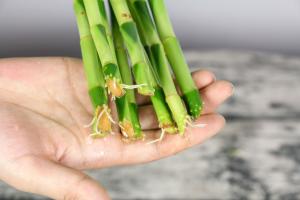Can You Stake Tomato Plants?
Tomatoes are a popular vegetable plant for gardeners who are looking to grow some delicious fruits in their yard. However, many gardeners often wonder whether they should stake their tomato plants or not. Staking is essentially a way to prop up the plants so that they grow upright, and it is often used to prevent the plants from falling over and becoming damaged. In this article, we will explore the pros and cons of staking tomato plants, as well as some tips for how to do it properly.
Advantages of Staking Tomato Plants
There are several benefits to staking tomato plants, including:
Improved air circulation: When tomato plants are supported by a stake, it allows for better air circulation among the leaves and fruits. This helps to prevent diseases from developing, such as blight or rot.
Increased fruit yield: Staking tomatoes can also help increase the number of fruits that the plant produces. When the plant is upright, it promotes better pollination and fewer fruit drop.
Easier to harvest: Finally, staked tomato plants are often easier to harvest because the fruits are higher up off the ground and easier to spot. This can make it easier to harvest the fruits before they become overripe or rot.
Disadvantages of Staking Tomato Plants
However, there are also some disadvantages to staking tomato plants, including:
Cost: Depending on the size of your garden, staking tomato plants can be a costly endeavor. You will need to purchase stakes or other support structures, which can add up quickly.
Time and labor-intensive: Staking tomato plants also requires a considerable amount of time and effort. You will need to plant the stakes correctly, tie the plants to the stakes, and maintain the supports throughout the growing season.
Possible damage: If you are not careful when staking your tomato plants, you can inadvertently damage the roots or stems, which can impact the plant's growth and fruit production.
Tips for Staking Tomato Plants
If you decide to stake your tomato plants, here are some tips to keep in mind:
Choose the right support structure: There are several different types of support structures you can use to stake your tomato plants, including stakes, cages, and trellises. Be sure to choose the right type of structure for your plants and your garden.
Plant the stakes correctly: When planting your stakes, be sure to place them deep enough into the soil so that they can support the plant's weight without falling over.
Tie the plants loosely: When tying the plants to the stakes or other support structures, be sure to tie them loosely to allow for growth and movement. Avoid tying the plants too tightly, as this can damage the stems or roots.
Maintain the supports: Finally, be sure to regularly check the support structures throughout the growing season to ensure that they are still holding up and not causing any damage to the plants.
In conclusion, staking tomato plants can be a great way to improve air circulation, increase fruit yield, and make harvesting easier. However, it is important to weigh the pros and cons before investing in a support structure. By following these tips for staking tomato plants, you can ensure that your plants are healthy and productive throughout the growing season.

 how many times do yo...
how many times do yo... how many planted tre...
how many planted tre... how many pine trees ...
how many pine trees ... how many pecan trees...
how many pecan trees... how many plants comp...
how many plants comp... how many plants can ...
how many plants can ... how many plants and ...
how many plants and ... how many pepper plan...
how many pepper plan...






























